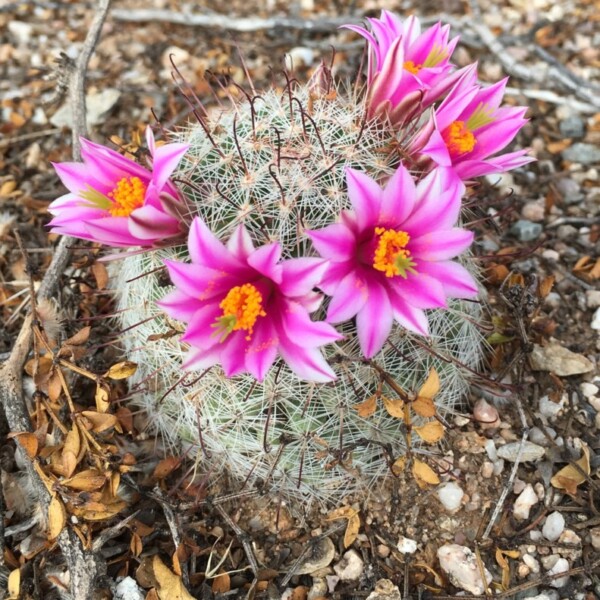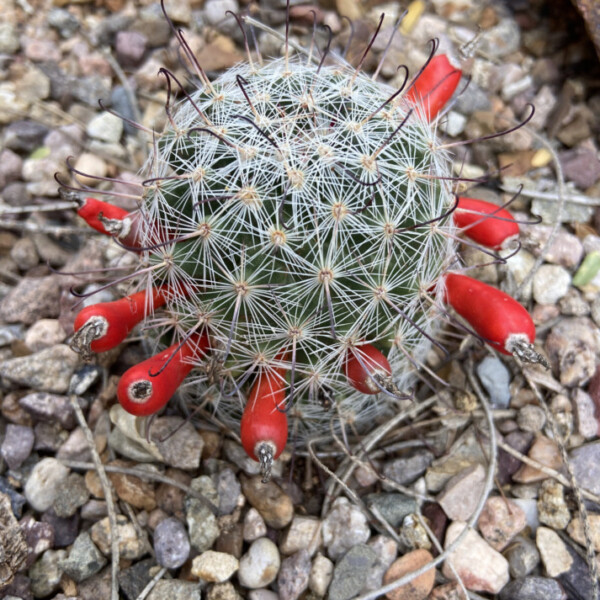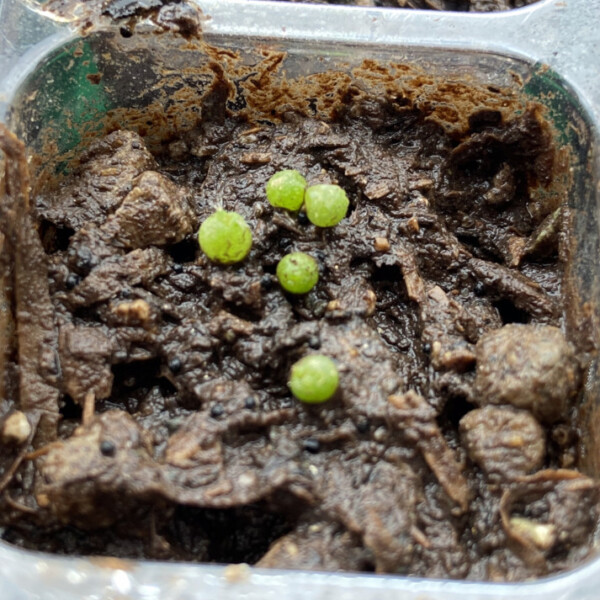When hiking through southeastern Arizona in the desert or woodlands, it’s a real treat to see the Arizona Fishhook Pincushion cactus (Mammillaria grahamii) growing cryptically under palo verde trees, creosote shrubs, or even under other cacti.
Over the course of the year, M. grahamii fluctuates between a state of full camouflage nestled among Sonoran Desert rocks or a state of being on full display with a shock of bright pink flowers or even brighter red fruits.
This small cactus grows multiple stems that reach 6-8 inches in height. The spine clusters are grayish white with a single hooked central spine that is darker in color. M. grahamii typically blooms within a week of a soaking rainfall event (often between April and September) and sets red fruit pods weeks after each bloom if pollination is successful.
Related Reading: Microscopic View of a Hedgehog Cactus Fruit
Numerous native bees visit the pink flowers when they open, and many small birds and mammals harvest the resulting fruits, spreading the seeds to new locations when the animal passes the seeds through its digestive track.
The M. grahamii fruits are edible, but I like to leave the seeds to be scattered in the desert naturally because I can’t get enough of these beauties in the desert! I’ve tried my hand at propagating them and have successfully germinated them on top of potting soil in a humid container. In the wild, these plants do best when their seeds establish under nurse plants of another species that offer shade and cooler temperatures.
In all, keep an eye out for these lovely cacti, they are so fun to spot along a trail.
Photo Captions:
Photo 1—Striking pink flowers appear like a crown on M. grahamii in the days following a summer rainfall soak.
Photo 2—Bright red and edible fruits appear in the fall after successful pollination occurs during the summer bloom.
Photos 3—The intergenerational cycle continues when seeds germinate into tiny M. grahamii seedlings. Shown here at about 1 month old.



